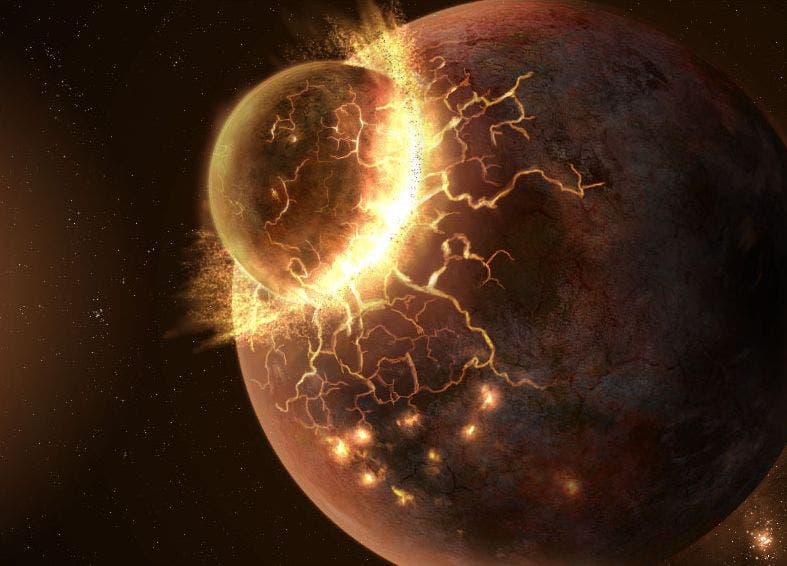Billions of years ago, our ancient planet collided with a Mars-sized object called Theia. The impact released tremendous amounts of energy which is thought to have produced a whole mantle magma ocean, which should have erased pre-existing chemical heterogeneities within the Earth. Following the onslaught, a new Earth formed, along with the moon. New geochemical findings hint that the impact didn’t completely melt the whole planet, leaving clumps and patches intact. This ancient past is thought to still ripple in Earth’s mantle.
Earthception

According to lead researcher Associate Professor Sujoy Mukhopadhyay (Harvard): “The energy released by the impact between the Earth and Theia would have been huge, certainly enough to melt the whole planet. But we believe that the impact energy was not evenly distributed throughout the ancient Earth. This means that a major part of the impacted hemisphere would probably have been completely vaporised, but the opposite hemisphere would have been partly shielded, and would not have undergone complete melting”.
The researchers analyzed the ratios of noble isotopes harvested from deep within the Earth’s mantle, then compared them with those collected nearer to the surface. The found that 3He to 22Ne ratio from the shallow mantle is significantly higher than the equivalent ratio in the deep mantle. Analysis of the 129-Xenon to 130-Xenon ratio came out similarly. If the 4.5 billion year-old Theia impact had completely melted ancient Earth, then we should have seen a more evenly mixed mantle.
Professor Mukhopadhyay continued: “The geochemistry indicates that there are differences between the noble gas isotope ratios in different parts of the Earth, and these need to be explained. The idea that a very disruptive collision of the Earth with another planet-sized body, the biggest event in Earth’s geological history, did not completely melt and homogenize the Earth challenges some of our notions on planet formation and the energetics of giant impacts. If the theory is proven correct, then we may be seeing echoes of the ancient Earth, from a time before the collision”.
Commenting, Professor Richard Carlson (Carnegie Institute of Washington), Past President of the Geochemical Society said: “This exciting result is adding to the observational evidence that important aspects of Earth’s composition were established during the violent birth of the planet and is providing a new look at the physical processes by which this can occur”.
The findings were presented at the at the Goldschmidt conference in Sacramento, California.
Was this helpful?



